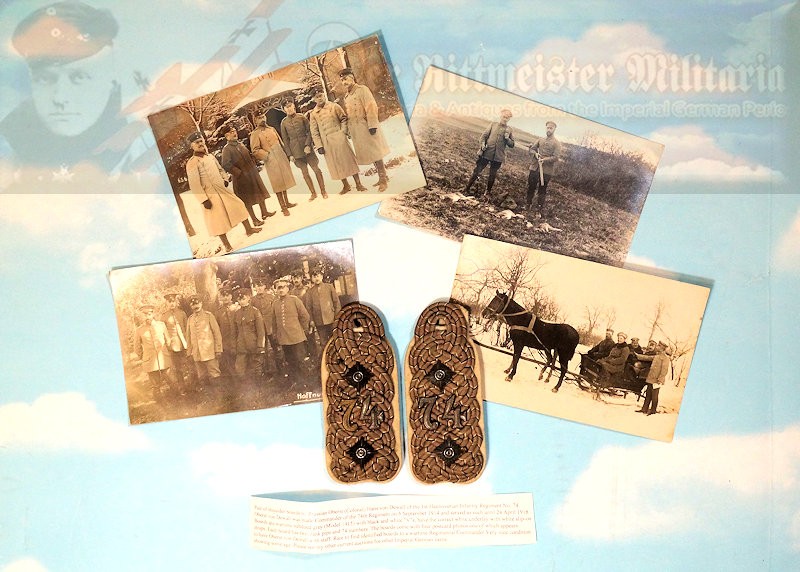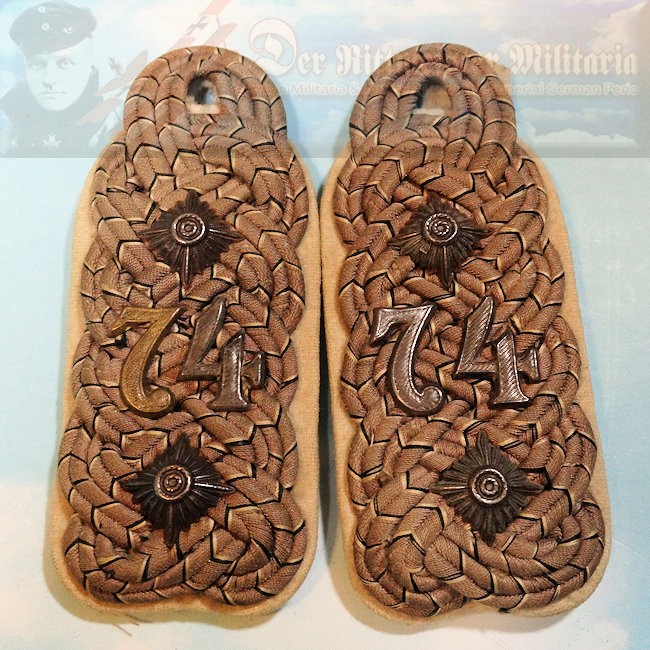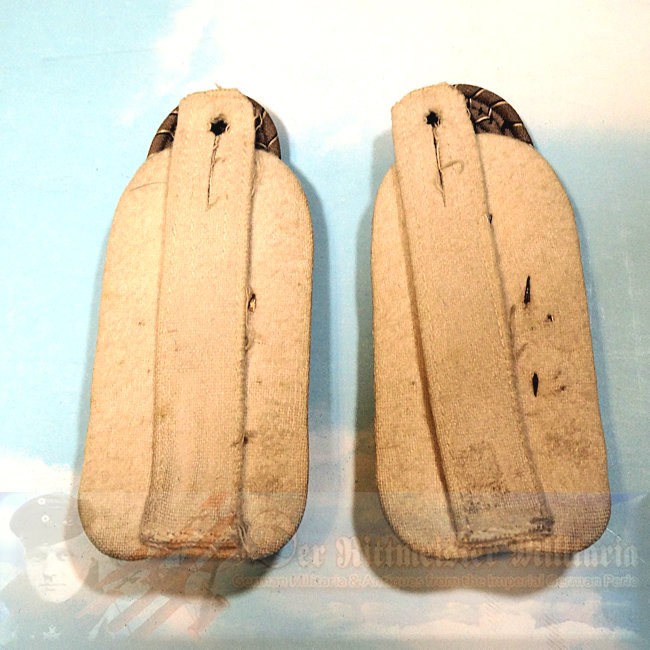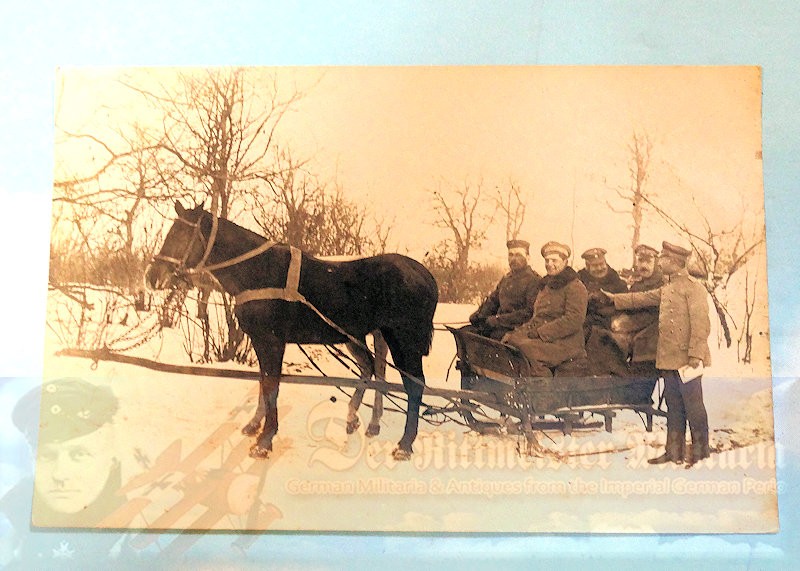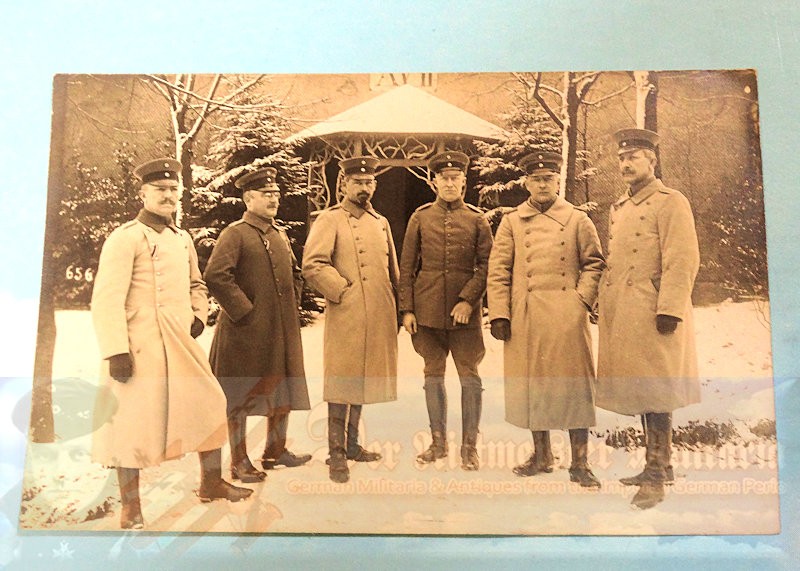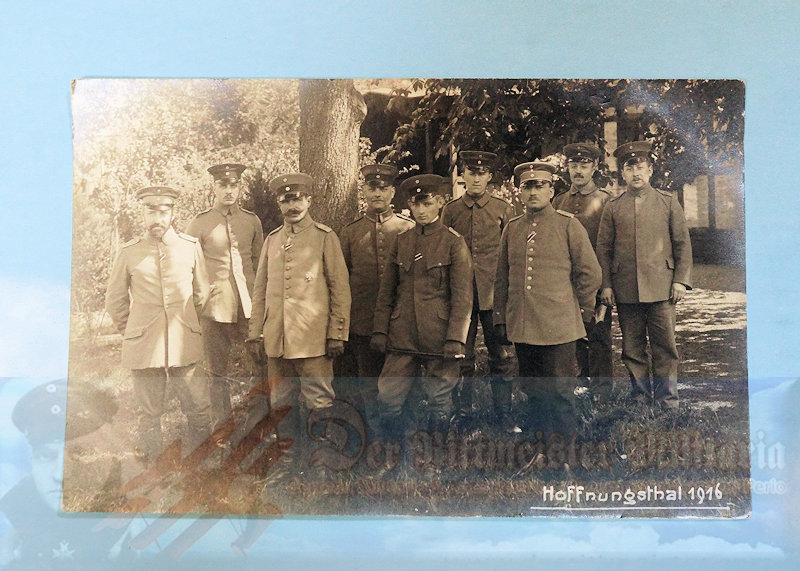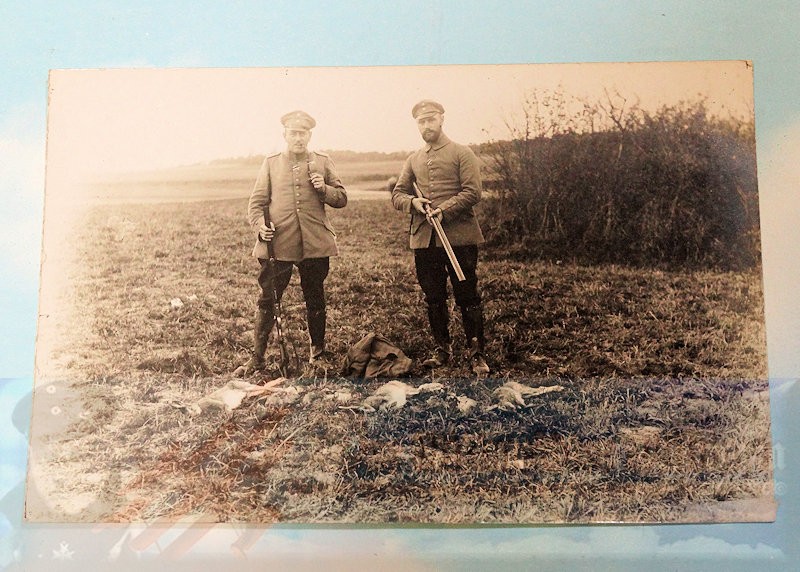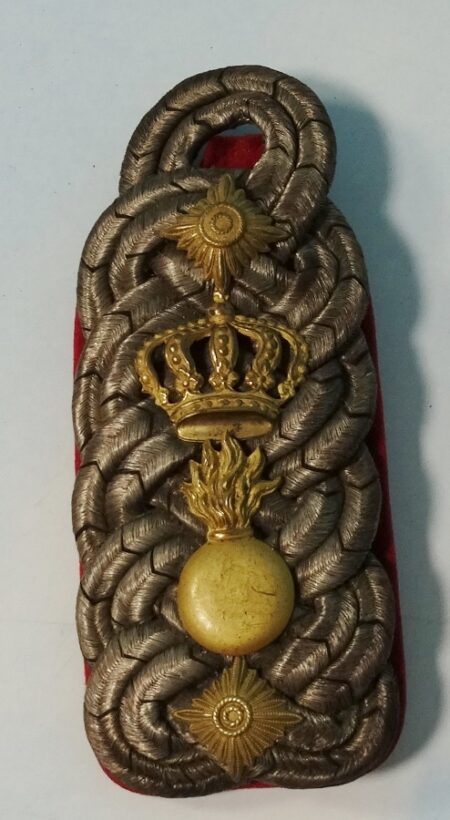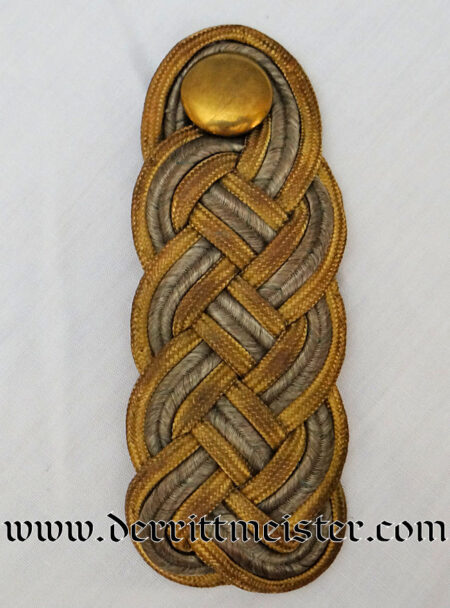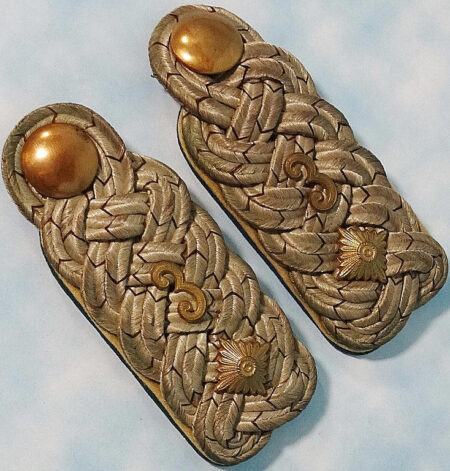Description
This highly-unusual, intriguing group features a pair of M-1915 1. Hannoverisches Infanterie-Regiment Nr 74 shoulder boards that once belonged to that regiment’s commander throughout much of WW I, along with four postcard photographs of the commander with his staff. 1. Hannoverisches Infanterie-Regiment Nr 74 was one of the very elite regiments that came from the Kingdom of Hannover. Hannover was absorbed by Prussia at the 1866 Austro-Prussian War’s conclusion (Hannover had allied itself with that brief war’s losing side).
When WW I began, Infanterie-Regiment Nr 74 was assigned to the 19. Infanterie-Division which, in turn, was assigned to the Prussian X. Armeekorps. The regiment was sent to the Western Front in August 1914 and saw active service at the Battles of Liège, Aisne, and Marne. It also spent time in 1915-1916 on the Eastern Front. Later, it participated in the legendary Operation Michael, March 1918’s great Spring Offensive. The entire Division was considered to be a top performer by Allied intelligence.
The shoulder boards are of the M-1915 variety, i.e., those used on feldgrau uniforms. They belonged to Oberst Hans von Dewall (1866-1923). Von Dewall was appointed the regiment’s Kommandeur on 6 September 1914 as an Oberstleutnant. He was promoted to Oberst on 18 June 1917 and held that command until 24 April 1918. In that same month, he was promoted to command Infanterie Brigade Nr 21, which he held until the war’s end. On 1 January 1919, he reverted to Infanterie-Regiment Nr 74’s command. [PLEASE NOTE: Effective 28 September 1921, von Dewall entered retirement as a Generalmajor a.D. It was customary in the German military to advance a retiring officer one rank higher than his actual final service rank, partially in recognition of his long service, but also to offer him a higher pension]. One interesting thing we can determine from von Dewall’s service rank, he would have worn these shoulder boards from his June 1917 promotion to Oberst until his 1921 retirement. After that time, he would have been authorized to wear a Generalmajor’s shoulder boards.
Each shoulder board measures 4” x 1 3/4.” The shoulder boards’ tops exhibit the roped, subdued design used by officers with Major/Oberstleutnant/Oberst ranks. The boards’ ropes feature black and white chevrons. The center of each shoulder board displays Infanterie-Regiment Nr 74’s subdued brass regimental designation. Flanking that regimental designation is a pair of subdued brass pips confirming his Oberst’s rank.
The shoulder boards’ white felt underlays extend past their outer edges. The boards’ reverses feature straps that allowed them to be slipped onto a tunic. Both are complete and in place. The boards overall condition is excellent.
A series of four postcard photographs featuring the regiment’s officers during various periods is included. We are not sure which man is von Dewall, but he IS present.
This is a fine, identified group from a regimental commander who led one of Imperial Germany’s finest Infanterie Regiments for much of the war. These magnificent shoulder boards appeared on page 148 of the recently released reference book “Under Arms for the Kaiser: Shoulder Insignia of the German Army’s Regiments 1871-1918, by Michael A. Kelso.”
These wonderful shoulder boards were previously owned by and featured in Michael A. Kelso’s recently released reference book Under Arms for the Kaiser: Shoulder Insignia of the German Army’s Regiments 1871-1918 on page 325. Having a piece of militaria that has been featured in a reference book (particularly one as fine as this) is a real plus, and seriously increases their value. We strongly recommend that you acquire this book while you can. The first edition is nearly sold out. As is the case with any reference book, a second edition is NOT guaranteed. Mike, who is a longtime friend, put his heart and soul into this book to help his fellow collectors. PLEASE support him and our other recommended authors: Jim Turinetti with his superb books on Imperial German headdresses, and Jeff Judge, who recently produced the first book of a three volume set about the Kaiserliche Marine. These men have poured a lot of sweat and tears into their works, all of which are worthy of inclusion in your library.
